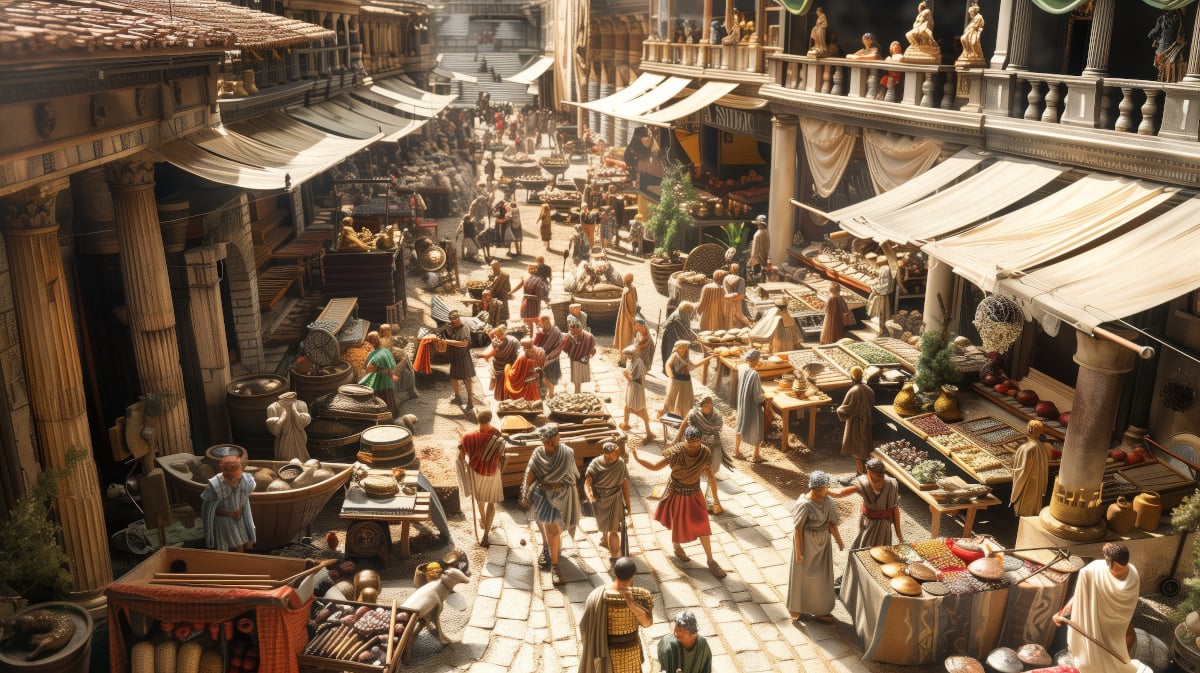
The Realities of Daily Life for Common People in Ancient Egypt versus Ancient Rome
The civilizations of Ancient Egypt and Ancient Rome stand as two of the most influential cultures in human history, each leaving a profound legacy in politics, architecture, religion, and social structure. While much attention has been given to the elites of these societies - pharaohs, emperors, and their noble courts - the daily lives of common people, who made up the vast majority of the population, offer a fascinating and essential window into the functioning of these ancient civilizations. Understanding the realities of daily life for common people in Ancient Egypt versus Ancient Rome requires an exploration of various aspects, including housing, work, family life, diet, religion, and social structure. By examining these elements, we can gain a clearer picture of how ordinary individuals navigated the challenges and opportunities of their respective societies, and how these experiences differed between the Nile Valley and the Roman Empire.
The Day-to-day of a Commoner: Housing and Urban Life
In both Ancient Egypt and Ancient Rome, the type of housing and the conditions in which people lived were closely tied to their social status and wealth. However, the common people in both civilizations typically resided in more modest dwellings, though the materials and construction varied according to local resources and climate.
In Ancient Egypt, common people often lived in small, mud-brick houses. These houses were usually built close together, forming densely packed villages along the Nile River. The design of these homes was simple, with flat roofs that were sometimes used for additional living space or for drying crops. The interior typically consisted of two or three rooms, with little in the way of furniture. The walls were often coated with plaster and sometimes painted with simple designs or left bare. Due to the arid climate, the mud-brick construction was practical, as it kept the interiors cool. However, these houses were not very durable, often requiring frequent maintenance or rebuilding.
- Life after Life: In the Quest for Eternity, Death is Only the Beginning – Part I
- Daily Life of the Aztecs: A Blend of Agriculture, Hierarchy, and Culture
In contrast, Ancient Rome had a more diverse range of urban housing, largely due to the complexity and size of its cities. Common people, especially in the crowded urban centers like Rome itself, often lived in insulae - multi-story apartment buildings constructed from brick, concrete, and wood. These insulae were notorious for their poor construction, with the upper floors being the most precarious and least desirable, often occupied by the poorest citizens. The apartments within these buildings were small and cramped, usually consisting of one or two rooms with minimal furnishings. Due to the high cost of space in the city, entire families might be confined to a single room. The overcrowded conditions in the insulae contributed to a high risk of fire, which was a common and deadly hazard in Roman cities.
While both civilizations provided their common people with relatively modest housing, the urbanization of Rome led to more complex living arrangements, often with a higher degree of discomfort and danger compared to the simpler, more rural-oriented Egyptian homes.
To Work and to Thrive
Work and economic life were central to the existence of common people in both Ancient Egypt and Ancient Rome, yet the nature of their labor reflected the different economic structures of these societies.
The economy of Egypt was largely agrarian, with the Nile River's annual flooding providing fertile soil for agriculture. The majority of common people worked as farmers, cultivating crops such as wheat, barley, and flax. Farming was labor-intensive, with the work divided among the seasons - preparing the fields, sowing seeds, irrigating the crops, and harvesting. Aside from agriculture, many Egyptians were employed in state-sponsored projects, particularly in construction. The construction of temples, tombs, and pyramids required a vast labor force, including skilled artisans, masons, and unskilled laborers. Though these workers were often conscripted by the state, they were compensated with food, clothing, and sometimes land. Artisans and craftsmen, who produced goods such as pottery, textiles, and tools, also played a significant role in the economy, though they generally occupied a slightly higher social status than farmers.

The flood of the Nile River at sunset. (Rasha Al-faky / CC BY-SA 4.0)
In Ancient Rome, the economy was more diverse, encompassing agriculture, trade, manufacturing, and a complex system of slavery. Like the Egyptians, many Romans were engaged in farming, especially in the countryside. However, in urban areas, common people often worked as artisans, shopkeepers, or laborers. The Roman economy was heavily dependent on trade, both within the empire and with foreign territories, which provided a wider array of goods and opportunities for employment. Markets were bustling centers of economic activity where people could buy and sell food, textiles, and other goods. Slavery was a significant institution in Rome, and many common people were either slaves or freedmen. Slaves performed a wide range of tasks, from household chores to skilled labor in workshops, and their labor was a crucial component of the Roman economy. Freedmen, who were former slaves, often continued in their previous occupations but enjoyed more legal rights and social mobility.




